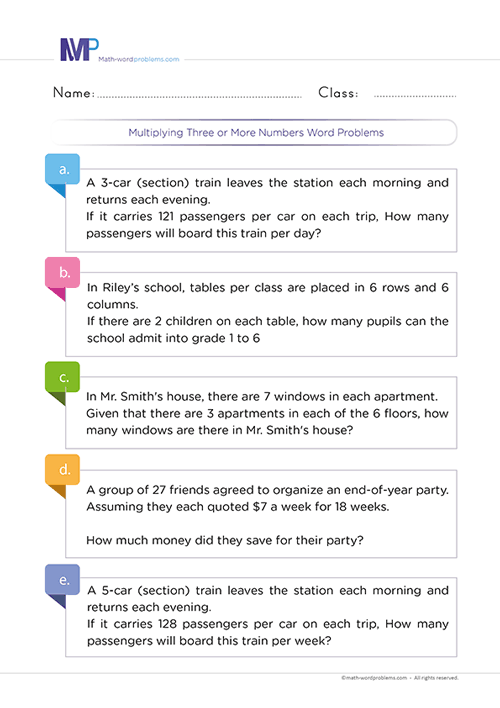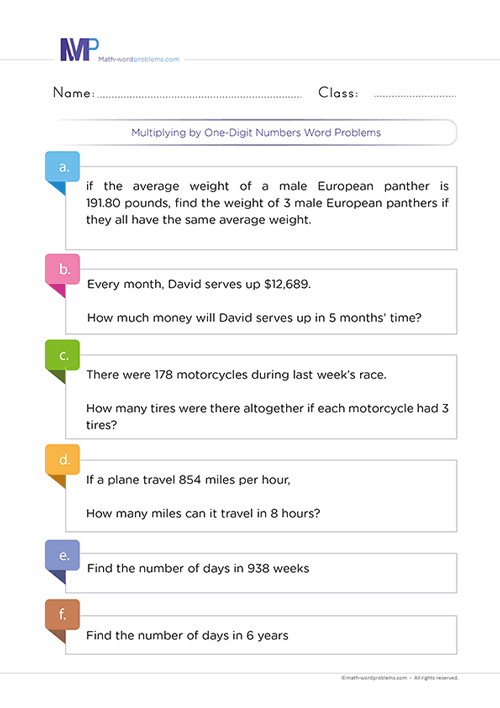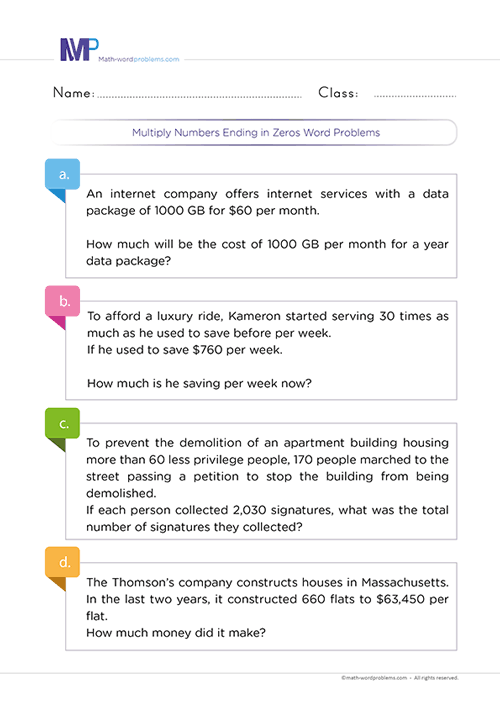 How to solve multiplication of three or more numbers word problems
How to solve multiplication of three or more numbers word problems
Discover how to solve multiplication of three or more numbers word problems using our step-by-step guide and techniques to understand and solve all challenging word problems on multiplication of multi-digit numbers word problems.
We will incorporate different strategies to help and enable 5th graders to discover the best strategy for themselves.
Note that most strategies do not touch every aspect of word problems. That is why we have treated everything concerning word problems in our step-by-step guide below. So, if your learners follow these constructive steps keenly, they can multiply all multi-digit number word problems no matter how challenging they seem.
Steps to solve multiplication of three or more numbers word problems
The aim of designing these steps to solve multiplication of three or more numbers word problems is to boost kids’ ability in perfect multiplying multi-digit word problems.
We know that the most significant challenge that fifth-graders face when encountering word problems is understanding the problem statement efficiently. However, we will offer your learners genuine solving steps below that will help kids overcome these challenges.
After learning these simple steps, use the skill to solve some thrilling real-life problems added below.
Step 1: IDENTIFY THE PROBLEM
To identify the problem, you need to read the word problem very carefully to know what the problem wants you to solve.
However, try to identify important numbers and keywords in the word problem. For instance, keywords that you will come across when you encounter a multiplication operation are: - times, multiplied by, product, product of, factor, of, multiply, times, multiple, double, triple, groups, by, twice, area, equal groups, every, in all, total, increased by, as much, each, lots of, groups of, per, etc.
Note: One key Element for learners to understand is that they should not always rely on keywords alone. That is to say; the same keyword can have different meanings in different word problems.
- For this reason, we reiterate on the importance of reading the question very carefully to understand the situation that the word problem is describing, then figure out exactly which operation to use
Step 2: STRATEGIZE OR GATHER RELEVANT INFORMATION
How are you going to combat the problem?
- As mentioned in step 1 above, the keyword(s) in the word problem will enable you to determine if you need to perform a Multiplication Operation.
- That said, know that you must not count entirely on keywords. Also, try to understand the situation that the problem is describing.
- After knowing the operation you will perform, construct short sentences representing the given word problem.
Step 3: SET UP AN EQUATION
Here, you will write down a numerical equation representing the information in the word problem.
Step 4: PROVIDE A SOLUTION
From step 3 above, multiply the numbers using regrouping or other multiplication methods like long multiplication, grid multiplication, or lattice to determine the result. Always add the unit of measurement to the final answer.
Step 5: CHECK YOUR WORK
Finally, check if your answer makes sense. For instance, estimate the answer and see if it is close to what you expected. However, if the answer is not what you expected, go back to step one and start all over again.
Examples on how to solve multiplication of three or more numbers word problems
Example one
Step 1: After reading the word problem very well, you see that the important numbers are 9, 12, and 4. Also, the most important keyword(s) found in the word problem is “each.”
Step 2: Now, how are you going to tackle the problem? You see that the situation the problem is describing and the keyword(s) found in the word problem call for you to perform a multiplication operation.
Next, after knowing the operation you are going to perform, form short sentences to represent the given word problem.
- Number of cake boxes Mr. Davis ordered = 9.
- Number of mini boxes per box = 12.
- Number of cupcakes per mini box = 4.
- Therefore, the number of cupcakes he ordered = the number of cake boxes Mr. Davis ordered × the number of mini boxes per box × the number of cupcakes per mini box.
Step 3:Now, write down a numerical expression to represent the bolded sentence in step 2 above to solve this word problem:
→ 9 × 12 × 4 = ?
Step 4: From step 3 above, multiply the numbers using regrouping or other methods like long multiplication, grid multiplication, and lattice to determine the result. Always include the unit of measurement in your final result.
9 × 12 × 4 = 432
So, Mr. Davis ordered 432 cupcakes.
Step 5: Finally, check if your answer makes sense. For instance, estimate the answer and see if it is close to what you expected. However, if the answer is not what you expected, go back to step one and start all over again.
Example two: How do you solve addition and subtraction with unlike denominators word problems?
Step 1: The important numbers that you’ll find here after reading the word problem are 12, 6, 5, and 3. As you continue to read further, the most important keyword you’ll find is “per.”
Step 2: Now, how are you going to tackle the problem? You see that the situation the problem is describing and the keyword found in the word problem call for you to perform a multiplication operation.
Next, after knowing the operation you will perform, form short sentences to represent the given word problem.
- Number of sections each portfolio has = 12.
- Number of subsections in the portfolio = 6.
- Number of documents per subsection = 5.
- Number of portfolios = 3.
- Therefore, the number of documents in 3 portfolios = the number of sections each portfolio has × the number of subsections in the portfolio × the number of documents per subsection × the number of portfolios.
Step 3: Now, write down a numerical equation to solve this word problem:
→ 12 ×6 ×5 ×3 = ?
Step 4:From step 3 above, multiply the numbers using regrouping or any other multiplication methods like long multiplication, grid multiplication, and lattice to determine the result. Never forget to add the unit of measurement to your final answer.
12 × 6 × 5 × 3 = 1,080
So, there are 1,080 documents in 3 portfolios
Step 5: Finally, check if your answer makes sense. For instance, estimate the answer and see if it is close to what you expected. If the answer is not what you expected, go back to step one and start all over again.






